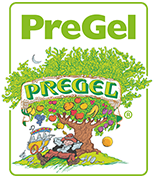Upgrading The Norm To Make The Unusual The New Usual
Every year the National Restaurant Association surveys hundreds of professional chefs from the American Culinary Federation to collect data for its annual What’s Hot Culinary Forecast. This report predicts what the hottest trends in culinary art and menu options will be for the upcoming year. The survey completed for the 2017 report concluded that artisanal house-made frozen desserts is trending as #1 on the Sweet List. Sweet! This means that chefs of artisan frozen desserts are already one step ahead in this delicious business.
Now, with everyone trying to keep up with this boom in the frozen dessert industry, how do you distinguish your menu from competitors? The common trend of amateur food photography makes it clear that consumers are constantly looking for the newest and most unusual foods that they can Tweet, Instagram, and Snapchat about. Twitter even reported that #IceCream was one of the top 10 food-related hashtags in 2016! With that being said, apart from filling your case with the usual suspects that still reign supreme as top selling frozen dessert flavors – chocolate, vanilla, butter pecan, mint chocolate chip, etc. – grab the interest of your targeted clientele with a showcase of adventurous flavor pairings.
The demand for superior taste coupled with surprising ingredients and eye-catching presentation is real. Below are two innovative nuggets of inspiration that will be sure to pique the interest of anyone who craves the cool satisfaction that comes with frozen desserts.
(Tip: Reserve the majority of your case for top-selling flavors. Sprinkle your menu with adventurous flavors each season, so as not to overwhelm your clientele with too many outlandish choices.)
What Did You Savory?
 It’s always safe to include familiar flavor profiles in your display case such as the classic juxtaposition of sea salt and caramel. This sweet treat has been a standing prescription for many cases of the nagging sweet tooth, but what’s next?
It’s always safe to include familiar flavor profiles in your display case such as the classic juxtaposition of sea salt and caramel. This sweet treat has been a standing prescription for many cases of the nagging sweet tooth, but what’s next?
It is consistently reported across the board that the American palate is expanding and the general consumer is increasingly looking for more tropical and exotic flavors in offerings spanning from drinks to dessert. In regard to the coveted after-dinner indulgence, the trend of more savory desserts over traditional sweets is taking dining tables by storm.
As reported by www.forbes.com, savory elements appeared in the third spot on a list of the eight hottest dessert trends to watch out for this summer. Following outrageous ice cream desserts such as monster shakes holding first place, and healthier sweets in second, top chefs are seeing an increase in savory ingredients such as ginger, basil, and vegetal components transforming standard desserts into breathtaking creations, while offering a sense of class, sophistication, and general intrigue. Furthermore, seeing as people generally have 10,000 taste buds which react to five flavor elements (sweet, sour, salty, umami, and bitter), we can taste when the fundamental sweetness of a dessert is enhanced by the alluring elements provided by savory inclusions, albeit flavorsome enrichment such as salty, herbaceous, bitter, or sour, or even aromatic characteristics. Applying savory features to sweetdeserts tend to serve the purpose of offering consumers the culinary adventure of not knowing what
to expect, while achieving “cravability”, which, according to Colleen McClellan, director of client solutions for Datassential, aims to hit all five basic tastes in one bite.
Because savory applications are making waves across dessert menus, dessert chefs are increasingly incorporating more dynamic elements into their artisanal offerings to continually up the bar. And seeing as smoking bans have been instituted in eating establishments across the country, the kitchens seem to be the only place this is permitted now, and for delicious reasons.
No Smoking Allowed:
Smoked ingredients are a huge trend for desserts of all kinds. Roasted pineapple adds a smoky and sophisticated flavor to pineapple upside-down cake, and smoked vanilla beans add complexity to America’s favorite “Plain Jane” of the menu, otherwise known as vanilla. Consumers are reportedly drawn to this hazy ingredient due to the depth it adds to desserts without being overpowering. As reported on www.today.com, smoked desserts from cheesecake to ice cream have been crackling on menus since the early 2000s, and the trend continues to catch more steam.
The online version of culinary education, Serious Eats,
www.seriouseats.com, lists utilizing smoked salt, precision smoke guns, or liquid smoke made from vapor that’s passed through a smoke chamber and condensed back into liquid to add a smoky taste. Nevertheless, the rich flavor of fresh wood smoke is said to be the best — preferably fruit woods such as apple or cherry. Oak and maple have also produced flavorful results, but different varieties of wood chips are fine.
Diverse methods of smoking the wood chips can be used, including a grill, the stovetop, or a smoker; whichever method used, it’s important to keep an eye on the wood chips, seeing as they burn quickly. Some chefs advise smoking only one component of the dessert prior to completion, i.e. the fruit, cheese, or spice such as vanilla bean. This process allows the chef to add subtle smoky flavor instead of overpowering the whole dessert.
What’s the draw of this trend? Smoke adds an intriguing twist to dessert menus; offers a smooth transition from savory entrees to desserts in restaurants; gives the consumer an additional flavor to explore.
In short, with consumers being curious gourmands and the expressive artistry of chefs, the inclusion of unusual flavor pairings such as savory/sweet and smoky/sweet make for the perfect opportunity to draw customer intrigue, boost sales, and have some fun doing both.

